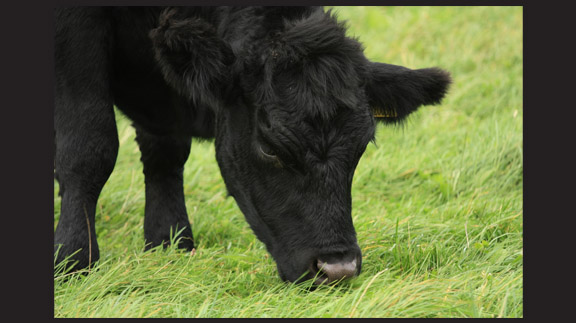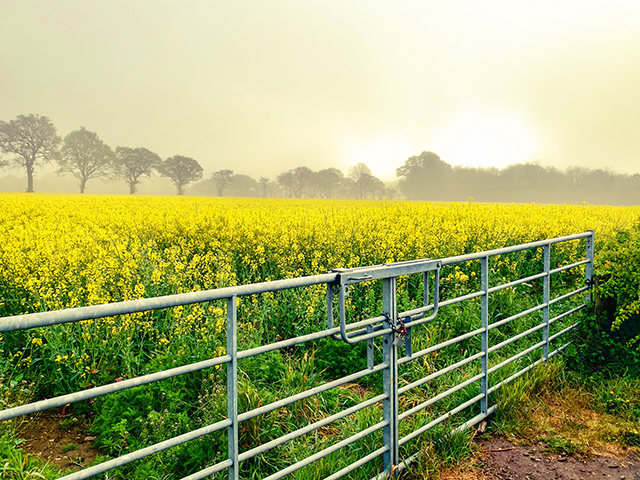Farm & Ranch
Long-term ranching outlook to highlight Jan. 14-15 Southwest Beef Symposium in Amarillo

By: Kay Ledbetter
Writer: Kay Ledbetter, 806-677-5608, [email protected]
Contact: Dr. Ted McCollum, 806-677-5600, [email protected]
AMARILLO – Big-picture emerging issues in the beef and ranching industries will be addressed at the Southwest Beef Symposium, jointly hosted by the Texas A&M AgriLife Extension Service and New Mexico State University Cooperative Extension Service.
This year’s conference, themed “Looking to the Future,” is set for Jan. 14-15 at the Wyndham Garden Hotel, 3100 Interstate 40 West in Amarillo.
“After some very rough years of drought, we will address issues of concern to the industry at large, but also at the ranch level,” said Dr. Ted McCollum, AgriLife Extension beef cattle specialist in Amarillo. “Hopefully, we have turned the corner and are beginning to stabilize the national cow inventory.”
Registration is $80 and includes a steak dinner on Jan. 14, lunch on Jan. 15, refreshments and symposium proceedings. Registration is required by Jan. 9 and seating is limited to 150, McCollum said, advising participants to register early. Others will be put on a waiting list.
Register online at http://agriliferegister.tamu.edu or by phone at 979-845-2604.
The opening session from 1-5 p.m. on Jan. 14 will include:
– The Beef Industry: What’s in Store Over the Next Five Years and Next 10 Years?, Dr. Darrell Peel, Oklahoma State University, Stillwater, Oklahoma.
– Ranching Strategies for the Long Term, Clint Richardson, Triangle Ranch, Paducah.
– Regulatory Issues Facing the New Mexico and Texas Cattle Industry, Karen Cowen, New Mexico Cattle Growers Association, Albuquerque, New Mexico; and Ross Wilson, Texas Cattle Feeders Association, Amarillo.
– Where Do I Go to Get Help with Regulatory and Legal Issues on My Property?, Tiffany Dowell, AgriLife Extension agricultural law specialist, Amarillo.
Jan. 15 issues and speakers will be:
– Rangeland Resource Management in the Panhandle: A Long-Term Perspective, Andrew Bivins, JA Ranch, Amarillo.
– Tipping Points for Juniper and Mesquite Control: Canopy Cover and Forage Production, Dr. Jim Ansley, Texas A&M AgriLife Research rangeland ecologist, Vernon.
– Evaluating the Current Costs and Future Value of Rangeland Improvement Practices, Dr. Richard Connor, rangeland economist, Texas A&M University, College Station.
– Climate and Weather Outlook: Better Days Ahead?, Brian Bledsoe, chief meteorologist, KKTV, Colorado Springs, Colorado.
– Heifer Development Strategies, Dr. Andy Roberts, U.S. Department of Agriculture-Agricultural Research Service Livestock and Range Research Laboratory, Fort Keogh, Montana.
– Genetic Management Tools for Commercial Cow-Calf Producers, Dr. Joe Paschal, AgriLife Extension livestock specialist, Corpus Christi.
– Bull Performance in the Pasture: What We Know; What We Are Learning, Dr. Bruce Carpenter, AgriLife Extension livestock specialist,Ft. Stockton.
For more information, go to the symposium website http://aces.nmsu.edu/ces/swbeef/ or contact McCollum at 806-677-5600 or [email protected] .
-30-
Farm & Ranch
Land Market Report: March Land Sales

By Jared Groce
Rural land sales are continuing on a steady pace for early spring, with prices holding very strong with the sell-to-list price ratios remaining very high, even on properties that have been on the market for a longer than usual time period. The total number of transactions are picking up once again as the spring selling season kicks off, and the average acreage continues to decrease.
Larger acreage properties seem to be in higher demand than smaller properties currently, with many buyers simply parking cash in real estate to hedge against inflation. Interest rates seem to have settled down and most experts agree that rates will be reduced by the fed this year. Some lenders have programs in place that allow the buyer to reduce their rates without having to go through a full refinance ordeal.
To read more, pick up a copy of the May issue of NTFR magazine. To subscribe by mail, call 940-872-5922.
Farm & Ranch
Texas FFA State Vice President Weston Parr

Future Farmers of America was founded by a group of farmers in 1928 with the mission of preparing the next generation of agriculture. It has done just that during its 95-year history, as the organization works to give back to others by following its motto, “learning to do, doing to learn, earning to live, living to serve.”
FFA is an organization made up of state associations, and at the helm of the Texas FFA is a team of 12 officers representing their respective areas within the Lone Star State. These individuals dedicate a year of their lives as they serve members, provide leadership, and work together with the state staff and board of directors to develop policy and lead the organization of over 177,000 members.
North Texas is represented by Area IV and Area IV, stretching from Wilbarger County to Bell County and from Runnels County to Grayson County. This year, those chosen to lead this great area are State President Isaac Hawkins Jr., Area IV, and State Vice President Weston Parr, Area V.
Parr is from the Sam Rayburn FFA chapter and the Area V Association, but the leader who now serves more than 19,100 members of Area V entered the FFA organization as a shy teenager who sat in the back of the room.
“I didn’t talk to a whole lot of people. I didn’t know what I wanted to do with my life or where I could see myself, so I wasn’t involved on my high school campus,” Parr recalled.
“Then I started FFA and slowly but surely, my ag teachers worked me into attending more contests, meeting new people, and speaking. I remember the first time I gave an officer speech to my chapter. I can still remember how embarrassing it was. To see the progression from that moment to speaking on stage at the state convention in front of thousands of people. Now I feel like I can enter the industry I want and be successful all because of what FFA afforded me for five years.”
There is not much Parr did not do during his time in high school. His contest participation included chapter conducting, wool judging, cotton judging, wildlife, and job interview, but his favorite was extemporaneous speaking, which he did not start until his senior year of high school.
“I wish I could go back to my freshman, sophomore, and junior years and start that sooner. I think if I had more time, I would have been more successful than I already was, but that was something I didn’t realize I liked at the time. I’m not naturally somebody who likes to speak in public, but it was actually my favorite,” Parr said.
Parr won several awards during his time competing. In 2023 alone, Parr earned the Texas FFA Service-Learning Proficiency title, was a National FFA Service-Learning Proficiency finalist, and a Texas FFA Extemporaneous Speaking finalist. In addition to his CDE and LDE events during high school, he showed commercial steers at Houston, and boilers at most major shows, participated in the county show with projects in ag mechanics, showed goats from time to time, and showed heifers until graduation.
“FFA provides invaluable resources and knowledge to be successful once you leave high school and you are out of the blue jacket for the first time. I have been a part of a lot of great organizations over the years, and they are all great in their own way, but in my opinion, FFA is the most successful at producing members of society who want to go and do something with themselves,” Parr said.
He was halfway through his time as Area V Association President and attending the national convention when he began to ponder the idea of running for state office.
“This is around the time when you usually figure out if you want to go through and be a state officer or you decide that area officer is your last run. I was unsure of where I wanted to go, but I knew I didn’t want to be done with FFA. I decided maybe it would be a good opportunity not only for me to make more friendships and connections, but also to give back to the program that allowed me to be able to do what I can do today,” Parr explained.
To read more, pick up a copy of the May issue of NTFR magazine. To subscribe by mail, call 940-872-5922.
Farm & Ranch
Texas FFA State President Isaac Hawkins, Jr.

FFA is an organization made up of state associations, and at the helm of the Texas FFA is a team of 12 officers representing their respective areas within the Lone Star State. These individuals dedicate a year of their lives as they serve members, provide leadership, and work together with the state staff and board of directors to develop policy and lead the organization of over 177,000 members.
North Texas is represented by Area IV and Area IV, stretching from Wilbarger County to Bell County and from Runnels County to Grayson County. This year, those chosen to lead this great area are State President Isaac Hawkins Jr., Area IV, and State Vice President Weston Parr, Area V.
These young leaders share a drive to give back to the organization that has given to them as they work to support FFA members while preparing for a future in the agricultural industry.
From the 12 selected representatives, delegates elect a president and first vice president, with the remaining 10 serving as vice presidents from their respective area associations. The selection process consists of a popular vote by delegates at the state convention, which accounts for 40 percent of the decision, and a committee process that includes a written knowledge exam, worth 10 percent, and an interview, accounting for 50 percent. This year, after all was said and done, Hawkins was named this year’s Texas FFA President.
Hawkins grew up as part of a large, blended family with five sisters and three brothers. While he says he did not grow up in agriculture, his youth was spent outside fishing and doing all things outdoors with his father, whom he calls his best friend. As he entered Hirschi High School in Wichita Falls, Hawkins knew he wanted to be a vet but was unsure of what courses to take to set himself on that path.
“I signed up for ag principals just because they had animals in the description. The first day of class we talked about churning butter, and I went to my school counselor that same day and told her to change my schedule immediately, but she refused. She made me stay there,” Hawkins laughed. “Luckily, I had an incredible ag teacher, and she really helped me to fall in love with the program.”
To read more, pick up a copy of the May issue of NTFR magazine. To subscribe by mail, call 940-872-5922.
-

 Country Lifestyles1 year ago
Country Lifestyles1 year agoScott & Stacey Schumacher: A Growth Mindset
-

 Equine8 months ago
Equine8 months agoThe Will to Win
-

 Country Lifestyles7 years ago
Country Lifestyles7 years agoStyle Your Profile – What your style cowboy hat says about you and new trends in 2017
-

 Country Lifestyles4 years ago
Country Lifestyles4 years agoAmber Crawford, Breakaway Roper
-

 HOME7 years ago
HOME7 years agoGrazing North Texas – Wilman Lovegrass
-

 Country Lifestyles7 years ago
Country Lifestyles7 years agoDecember 2016 Profile, Rusty Riddle – The Riddle Way
-

 Country Lifestyles8 years ago
Country Lifestyles8 years agoJune 2016 Profile – The man behind the mic: Bob Tallman
-

 Outdoor9 years ago
Outdoor9 years agoButtercup or Primrose?






